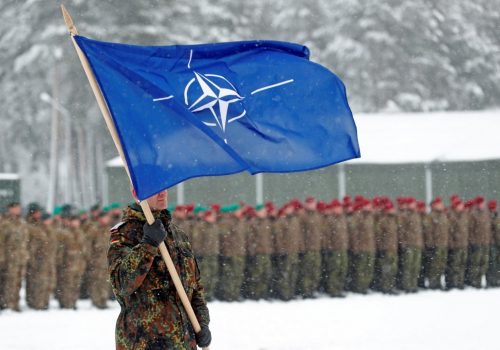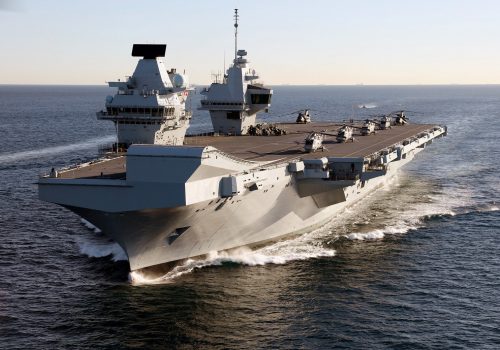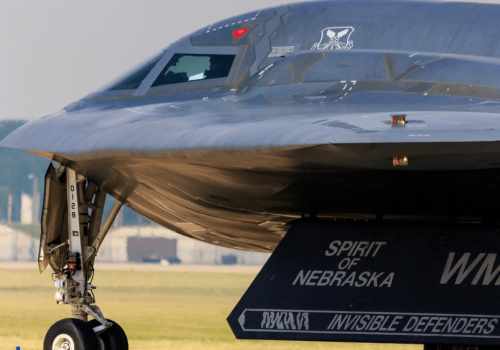October 14, 2020
Disband the NATO Response Force
Introduction
Most of the essays in this collection suggest new policies for NATO to pursue, other initiatives for it to unveil, or more things for it to do. By contrast, this essay will suggest something NATO should stop doing: the Alliance should disband the NATO Response Force (NRF). After nearly twenty years, the NRF is like an antiquarian book—very expensive to acquire, but once purchased it rarely leaves the shelf. Instead of continuing to invest resources in the NRF, the Alliance ought to strengthen readiness and build capabilities by pursuing a more intensified form of interoperability.
The NRF was launched in November 2002 at the Alliance’s Prague Summit. The brainchild of US defense leaders, the NRF was intended to strengthen NATO’s readiness and responsiveness as well as act as a catalyst for capability development (especially in Europe). As one of its conceptual forebears has written,1Richard Kugler, “The NATO Response Force 2002-2006: Innovation by the Atlantic Alliance,” Case Studies in National Security Transformation, National Defense University (2006), https://ndupress.ndu.edu/Portals/68/Documents/occasional/CTNSP/CaseStudiesArchive/Case-1-NATO-Response-Force.pdf?ver=2017-06-16-150518-373. the goal was to create a “real-life force with a C4ISR structure and assigned combat units, not merely a disorganized troop list,” pulled together on an ad hoc basis. The problem is this original defining strength of the NRF has been revealed as its Achilles heel.
Trouble from the outset
Declared initially operational in October 2004, the NRF reached full operational capability in 2006. However, the NRF was beset with challenges2“Money Problems Hobble NATO’s Rapid Response Force,” DW, October 2, 2006, https://www.dw.com/en/money-problems-hobble-natos-rapid-response-force/a-1899166. from the outset. It faced shortfalls in fixed-wing transport, rotary wing assets, intelligence, and logistics units. A degree of this was due to extant operations in Afghanistan, but in other instances allies were simply unwilling to contribute forces.3Mark John, “NATO rapid-reaction force hobbled by cuts,” Reuters, September 17, 2007, https://www.reuters.com/article/us-nato-force-idUSL1790834720070917. Given these shortfalls, NATO reduced the response force’s level of ambition after one year of the NRF’s existence, essentially downsizing it from twenty-five thousand troops to about twelve thousand five hundred.
Continuing shortfalls resulted in yet another reorganization in 2009-10, leading to the creation of a thirteen thousand-strong, multinational Immediate Response Force (IRF) as the core of the NRF, but with a somewhat different mission. By shifting from a collection of specific mission types to a far more generic mission statement, the allies essentially obviated the issue of unfilled capability requirements4Jens Ringsmose and Sten Rynning, “The NATO Response Force: A qualified failure no more?” Taylor and Francis Online, July 31, 2017, https://www.tandfonline.com/doi/abs/10.1080/13523260.2017.1350020. for any given twelve-month IRF rotation.
In the wake of Russia’s invasion of Ukraine in 2014, NATO grew increasingly concerned about Baltic and Polish security. As a result, the Alliance initiated the Readiness Action Plan, a key element of which entailed revamping the IRF into the Very High Readiness Joint Task Force (VJTF), and shortening its response time. Previously, although some elements of the IRF were deployable within five days,5Robert J, Hendricks, Response Forces Galore: A Guided Tour, Clingendael Institute, November 1, 2014, https://www.jstor.org/stable/resrep05332?seq=1#metadata_info_tab_contents. most of the force required thirty days to deploy. Today, there are elements of the VJTF—the centerpiece of which is a reinforced multinational brigade of roughly five thousand troops—that can deploy within forty-eight hours.
NATO also technically increased the size of the NRF from thirteen thousand to about forty thousand, but this change essentially constituted an exercise in creative accounting.6Jens Ringsmose and Sten Rynning, Can NATO’s New Very High Readiness Joint Task Force Deter?, Norwegian Institute for International Affairs, January 1, 2016, https://www.jstor.org/stable/resrep07991?seq=1#metadata_info_tab_contents. Instead of expanding the VJTF per se, NATO declared that the VJTF troops that had just completed their twelve-month rotation, as well as the VJTF troops designated for the next twelve-month rotation, were all considered part of the NRF’s Initial Follow-on Forces Group (IFFG), deployable within thirty to forty-five days.
NRF in action?
NATO claims, “the NRF can be rapidly tailored to meet the needs of a wide variety of missions, wherever in the world a crisis emerges.”7“NRF Rotation 2020,” NATO JFC Brunssum, https://jfcbs.nato.int/page5725819/nrf-rotation-2016.aspx. In practice though, the NRF has not been utilized in a variety of missions, nor has it played any role whatsoever in the most urgent crisis the Alliance has seen in decades.
Since the NRF’s inception nearly twenty years ago, it has been used in support of Afghan elections (2004), the Athens Olympic games (2004), and disaster relief in Pakistan (2005) and the United States (2005). Inexplicably though, it played no role in reinforcing the Baltic States, Poland, or Romania in response to Russia’s invasion of Ukraine and its annexation of Crimea. If there has ever been an opportunity for the NRF’s employment, it was then.
Why has the NRF never been used, aside from high-visibility event security or disaster relief? Activating the NRF requires a consensus decision by all allies, a number of whom have long prevented8“Select Committee on Foreign Affairs Seventh Report: Afghanistan, continued,” UK Parliament, July 29, 2004, https://publications.parliament.uk/pa/cm200304/cmselect/cmfaff/441/44108.htm. NATO from making full use of this capability. As Alliance membership has grown, achieving consensus on deploying the NRF has only become more difficult.
In theory, the revamped NRF—with the VJTF as its centerpiece—is meant to function as part of NATO’s tripwire deterrence-by-punishment posture. The VJTF is too small to stop a determined Russian offensive, but with troops from a variety of allies participating in each twelve-month rotation there are guaranteed to be casualties from across Europe and North America if Moscow were to send forces into one of the Baltic States, for instance. However, this presumes that the Alliance has agreed to deploy the NRF at the first indication of an incursion, and therein lies the problem.
Why the NRF remains on the shelf
Many European allies have long been reluctant to devolve authority to a US Supreme Allied Commander Europe (SACEUR) to employ multinational forces in the absence of a decision by the North Atlantic Council (NAC). This is perfectly understandable—sovereign allies are unwilling to cede decisions to an unelected US officer over whether to engage in war.
However, NAC deliberations and the time it might take to authorize SACEUR to employ the NRF creates serious problems for front-line allies like the Baltics, which could be overrun by the time other allied capitals weigh in. To address this challenge, the allies have granted SACEUR some additional authority to “alert, stage, and prepare”9“Press Conference by NATO Secretary General Jens Stoltenberg following the meeting of NATO Defence Ministers,” North Atlantic Treaty Organization, June 24, 2015, https://www.nato.int/cps/en/natohq/opinions_120967.htm. the VJTF to be ready to go once the political decision is made. Nonetheless, the problem remains that in the absence of consensus—which may be difficult to reach in cases where evidence supporting NATO involvement remains ambiguous—the VJTF, and with it the NRF, will remain unused. Secondarily, the risk remains that one or more allies whose forces are at the time assigned to the VJTF could decide that while it will not stand in the way of consensus on a decision to deploy, it will not allow its forces to participate in the deployment, potentially rendering the NRF ineffective. Given that the NRF is comprised of specific units committed for a full year, like a tower of Jenga blocks, if one piece of this multinational agglomeration is pulled out, the whole structure risks failure.
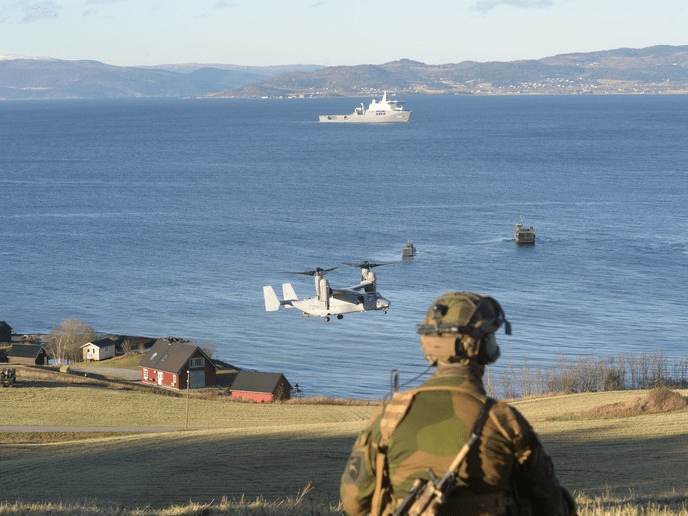
Like a tower of Jenga blocks, if one piece of this multinational agglomeration is pulled out, the whole structure risks failure.
The Very High Readiness Joint Task Force, a part of the NATO Response Force, participated in NATO’s large-scale exercise Trident Juncture 18, to test its readiness and capabilities. (Source: NATO Flickr)
The standards for participation in the NRF are expensive to achieve and maintain over time, especially in terms of training exercises and the supplies of ammunition and spare parts that must be built up and set aside. For example, the Netherlands—which made important but relatively small contributions to the NRF in 2017, 2018, and 2019—earmarked €10 million per year10House of Representatives of the Netherlands, “Brief van de Minister van Defensie Aan de Voorzitter van de Tweede Kamer der Staten-Generaal,” December 19, 2016, https://zoek.officielebekendmakingen.nl/kst-29521-335.html. for additional VJTF-related exercises, transportation, and supplies. Designated allied units participate in a NATO exercise program to integrate, prepare, and certify they are ready for the twelve-month NRF assignment. Allies generally also carry out national-level pre-training prior to the NRF exercise. Once on their twelve-month NRF rotation, allied units then remain in their respective countries on standby, although they can also be utilized for national-only purposes during that same period.
If they are not used, those units represent a well-prepared, yet expensive and underutilized defense asset. While allied units and personnel may retain a degree of the interoperability and capability development that accompanies the NRF train-up, they risk completely wasting the readiness built and maintained over that nearly two-year period of both pre-rotation training and assignment as an NRF-designated unit. This represents a significant cost at a time when most allies are likely to face increasing defense budget pressure in the wake of the COVID-19 recession.
Watch the video
What does NATO have to lose?
A primary argument11Guillaume Lasconjarias, “The NRF: from a Key Driver of Transformation to a Laboratory of the Connected Forces Initiative,” NATO Defense College Rome, Research Division, 88 (January 2013), file:///C:/Users/rache/Downloads/rp_88%20(2).pdf. advanced in support of what the NRF has accomplished to date is that it has spurred multinational cooperation, interoperability, and capability development. This may be true, but the NRF is not necessarily the only vehicle through which these important objectives can be achieved.
The Alliance conducts an array of multinational exercises12“NATO Exercises,” SHAPE NATO, July 27, 2020, https://shape.nato.int/nato-exercises. every year, through which it can cultivate cooperation, readiness, and interoperability. Moreover, the NATO Defense Planning Process (NDPP) is a well-established, increasingly effective tool for identifying the minimum military capabilities needed across all Alliance mission areas and for designating specific allies to develop them.
Therefore, to think that by eliminating the NRF the allies would do irreparable harm to their military cooperation, interoperability, capability development, and readiness is inaccurate. Nonetheless, if the NRF is disbanded, there is an alternative approach that the allies might consider to supplement existing exercises, the NDPP, and other tools.
What should replace it?
The allies can make more efficient and effective use of their limited defense funds by focusing on building plug-and-play interoperability within their quick-response military formations. For example, any designated quick-response unit ought to be able to operate effectively and efficiently with and as part of any other ally’s unit at the next echelon. A Bulgarian rapid-response airborne company ought to be able to operate under a Spanish, Italian, or Belgian rapid-response airborne battalion, which each ought to be able to operate under a French, US, or Polish rapid-response brigade, and so on up through the corps level and across all types of military forces.
This sounds much easier than it would be, especially when considering allied efforts over the last three decades13Dr. Thomas-Durell Young, Multinational Land Forces and the NATO Force Structure Review, Strategic Studies Institute, US Army War College, June 2000, https://ssi.armywarcollege.edu/multinational-land-forces-and-the-nato-force-structure-review/. to build persistent multinational formations and establish routines of cooperation14“1 (German/Netherlands) Corps,” 1GNC, https://1gnc.org/. within NATO. It also means acknowledging that NATO per se may not be the first responder to a crisis. Instead, some subset of willing allies would more likely be first into the fray. This may frustrate those who argue that Alliance solidarity is critical, but such a structure would finally enable the allies to field the rapid response force packages they have invested in.
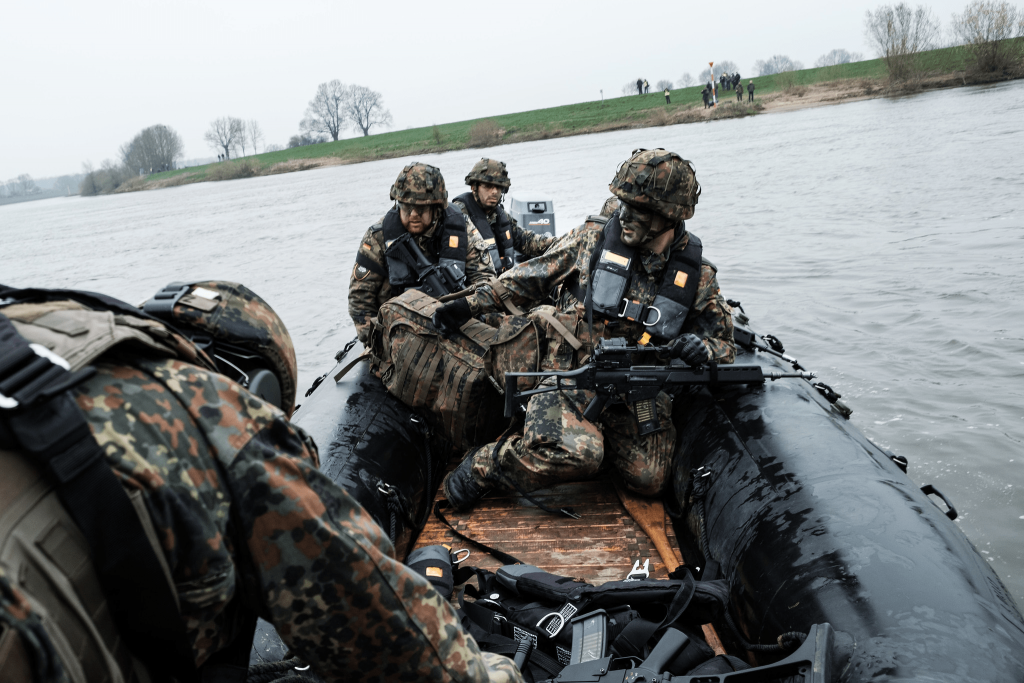
A Bulgarian rapid-response airborne company ought to be able to operate under a Spanish, Italian, or Belgian rapid-response airborne battalion, which each ought to be able to operate under a French, US, or Polish rapid-response brigade, and so on up through corps level and across all types of military forces.
German soldiers serving as part of the NATO Response Force’s Very High Readiness Joint Task Force participate in a NATO exercise in Germany. (Source: NATO)
Additionally, a plug-and-play interoperability initiative represents a solution to the problem of the NAC’s speed of decision-making as well as the risk that a single ally might withdraw a critical NRF capability even as it agrees on the necessity of doing something. It also allows the allies to retain a multinational approach, sharing risks to the degree that any particular crisis makes politically feasible. By aiming for the highest degree possible of operational, logistical, and technical interoperability—and testing it regularly through vigorous NATO exercises—a plug-and-play interoperability initiative also enables the allies to build modern military capabilities. Finally, coupling it with deployment timeline requirements established, allocated, and monitored through the NDPP would ensure the Alliance achieves and maintains its readiness goals, enabling it to stay on par with what the NRF offers today in terms of ready forces.
In sum, the NRF is, at best, achieving only one of its two goals, and even this is debatable. It would be better for NATO to steer defense resources toward tools, mechanisms, and capabilities that would serve allied interests, strengthen deterrence, and reassure all allies more effectively. Doing away with the NRF and replacing it with a plug-and-play interoperability initiative coupled with NDPP-driven readiness requirements will not necessarily result in better readiness or interoperability over what the alliance has today. Instead, it would enable the Alliance to better utilize the readiness and interoperability it builds.
* * *
Dr. John R. Deni is a research professor of Joint, Interagency, Intergovernmental, and Multinational (JIIM) Security Studies at the US Army War College’s Strategic Studies Institute (SSI).
Explore the podcast series
Related NATO 20/2020 essays
Related program
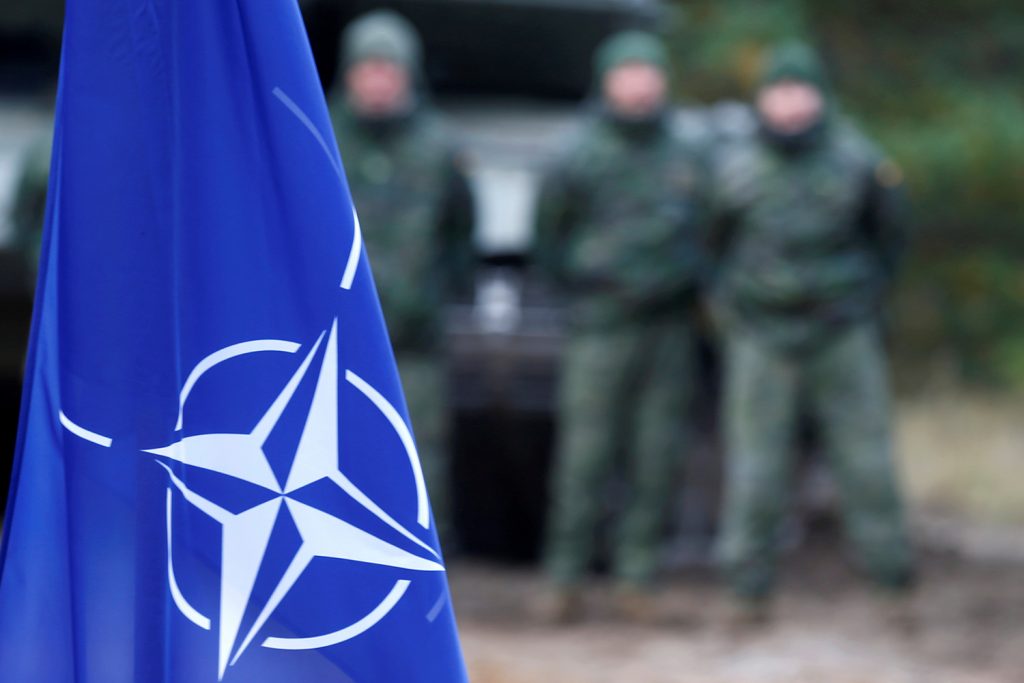
The Transatlantic Security Initiative, in the Scowcroft Center for Strategy and Security, shapes and influences the debate on the greatest security challenges facing the North Atlantic Alliance and its key partners.
Subscribe for events and publications on transatlantic security
Sign up for updates from the Atlantic Council’s Transatlantic Security Initiative, covering the debate on the greatest security challenges facing the North Atlantic Alliance and its key partners.
Image: Armored Vehicles progress on the battlefield during Trident Juncture 18, in which the NATO Response Force’s Very high Readiness Joint Task Force participated.
(Source: NATO Flickr)
